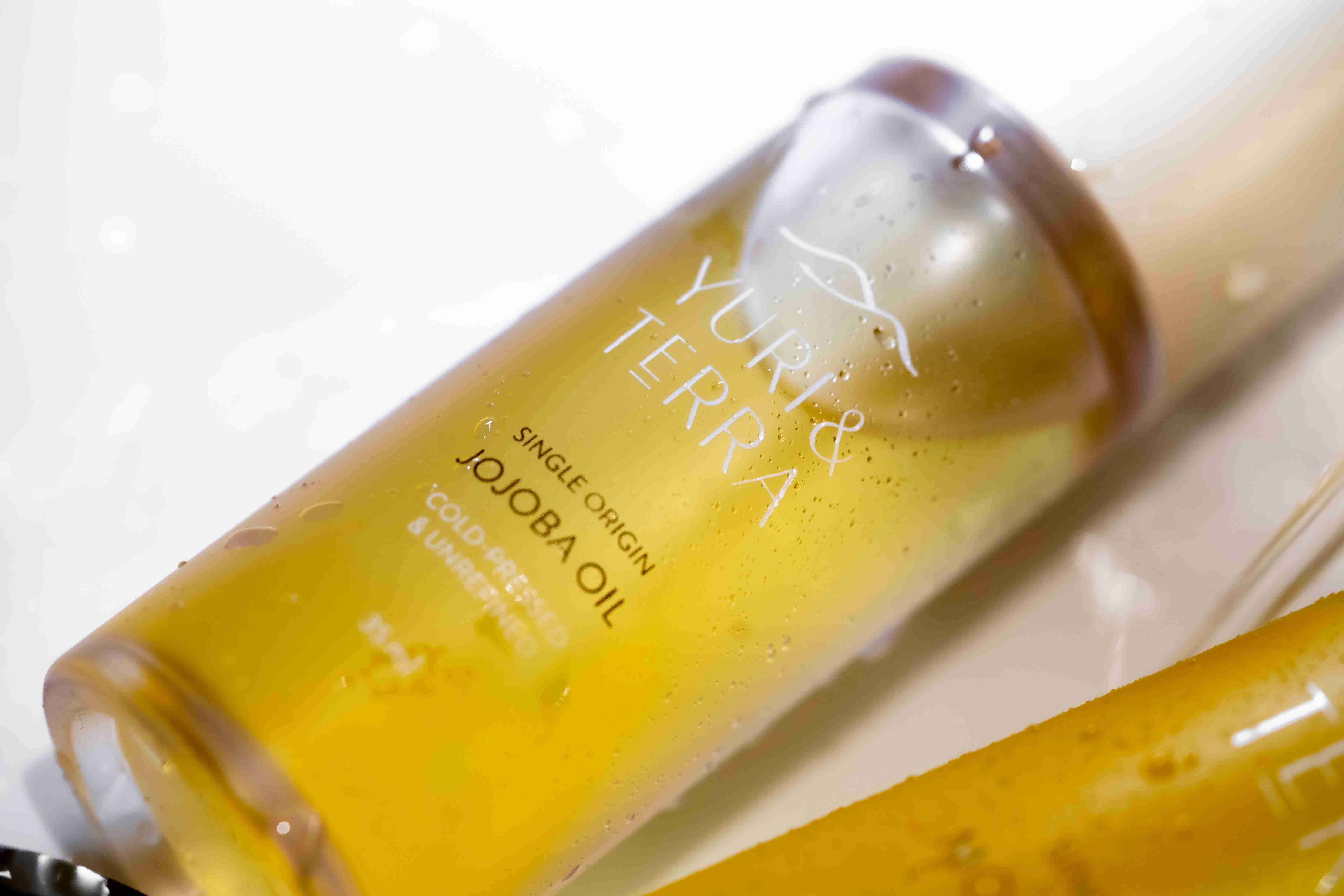Ever wondered exactly what is in all those little pots in your beauty cabinet, how each ingredient works, and what all those beauty buzzwords mean? Let us clear up some of the confusion around moisturizers and introduce you to the wonders of jojoba oil.
Different Types of Moisturizers
Moisturizers can be categorized into 3 types. For your skincare routine, the products you choose should include each type of moisturizer in order to most effectively retain the skin’s moisture.
Humectants: Hydrate
Humectants are the substances that help hydrate the skin and retain its moisture by attracting water molecules from the dermis and the environment to the epidermis, which is the layer of dehydrated skin. However, this substance cannot retain moisture for long. Therefore, you should use it along with moisturizing products that contain emollients or occlusive ingredients such as jojoba oil, lotion, or a nourishing cream with a richer texture, to help maintain the skin’s moisture. Manufacturers sometimes add humectant ingredients into lotions and nourishing creams, so the products can provide and retain moisture for the skin.
Examples: Hyaluronic acid, glycerin, or AHAs such as lactic acid.
Emollients: Repair
Emollients are substances that soften and smooth the skin. They do not directly moisturize the skin, but help fill the gaps between the skin cells with water and lipids. This type of moisturizer coats your skin like a thin film layer to maintain the moisture and keep the humectant components on the skin. With a lighter texture compared to occlusives, emollient moisturizers suit all skin types, but especially dehydrated oily skin.
Examples: Emollients can be found in shea butter, ceramide, vitamin E, plus vegetable oils like jojoba oil, and water-based ones like aloe vera.
Occlusives: Seal
Occlusives are similar to emollients in that they focus on locking in water and moisture from humectants in your skin, preventing evaporation by forming a film layer to coat the epidermis. The differences are that occlusive molecules are larger and have a richer texture, so they especially suit those who have extra dry skin or a skin area that is particularly rough.
Examples: Wax, petroleum, lanolin, and cocoa butter. In addition, some experts and resources also include jojoba oil in this type.

Make Jojoba Oil Part of Your Routine
1. Cleanse your skin thoroughly. For facial skin, no matter if you’ve got full makeup on or just sunscreen, you should wipe off the dirt with oil before using your facial foam. Use jojoba oil which helps trap dirt without drying out your skin.
2. Apply moisturizer while your skin is still damp because damp skin readily absorbs skincare products. For facial skin, start with a light texture moisturizer with humectant ingredients such as a serum or essence with hyaluronic acid. For body skin, if you want to nourish it a little more deeply, we recommend applying jojoba oil or another cold-pressed skincare oil as your last step after shower. The oil will absorb into your skin and leave no greasy residue.
3. Lock in your skin’s moisture with an emollient or occlusive moisturizer with a richer texture. Pick the one that suits your skin type and the weather you’re subjected to most.
Of all the moisturizers we’ve mentioned, jojoba oil is the one that both retains the skin’s moisture and nourishes it for soft and healthy skin. You can use jojoba as a facial massage oil, to cleanse your face, and to nourish your body skin, hair, and nails.
Moreover, despite being an oil, jojoba oil’s molecular structure is similar to that of sebum (oil on the skin) which allows it to be absorbed into the skin readily with no greasy residue, so you can easily use it on a daily basis.
Read our YURI & TERRA blogs to discover the magic of jojoba and the cold-pressed jojoba oil products harvested from our organic farm.